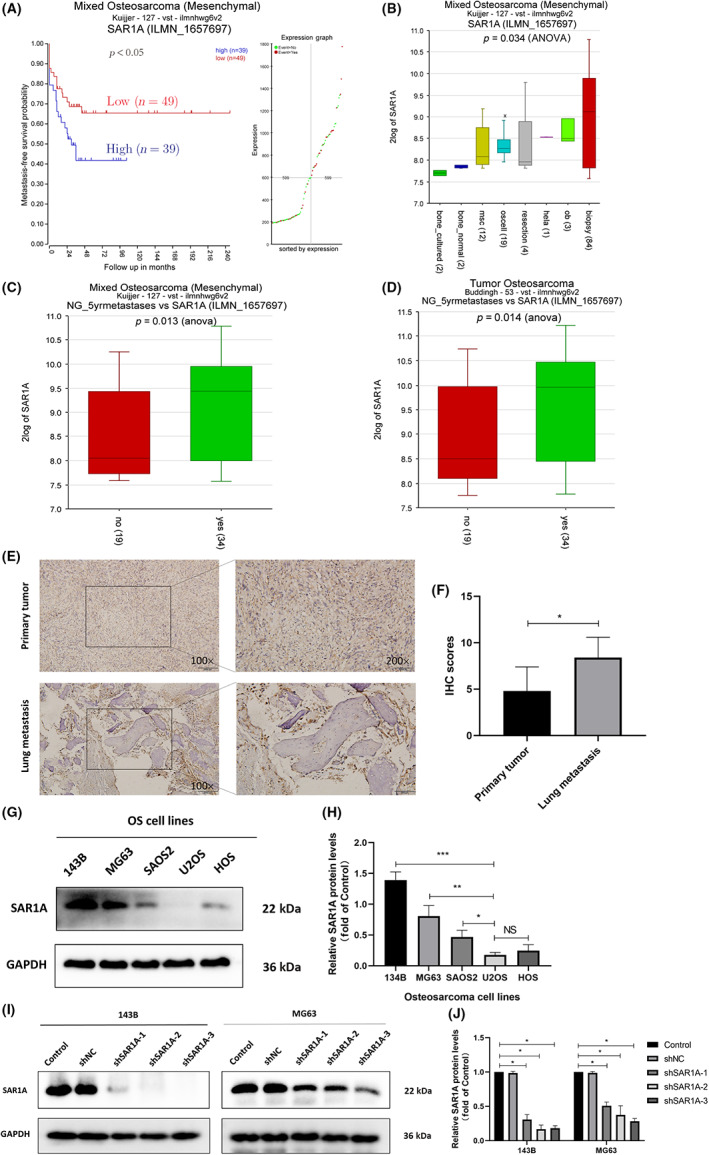FIGURE 1.

SAR1A upregulation in osteosarcoma is associated with poor patient prognosis. (A) In total, 39 and 49 osteosarcoma patients with high and low levels of SAR1A expression, respectively, experienced metastasis‐free survival. (B) SAR1A expression levels in osteosarcoma biopsy samples, osteoblasts, osteosarcoma cells, mesenchymal cells, and healthy bone tissue. biospsy, 84 biopsy samples of osteosarcoma cases; bone_cultured, cultured bone cells; bone_normal, normal bone tissue; hela, HeLa cells; msc, mesenchymal stem cells; ob, osteoblast; oscell, osteosarcoma cells; resection, osteosarcoma resection samples. (C, D) SAR1A levels in osteosarcoma patients with metastatic and nonmetastatic disease. (E, F) SAR1A levels were measured by immunohistochemical (IHC) staining in primary tumors and lung metastases from five osteosarcoma patients. (G, H) SAR1A levels were measured by western blotting in osteosarcoma cell lines (143B, MG63, SAOS2, U2OS, and HOS). (I, J) Levels of SAR1A in MG63 and 143B cells were assessed by western blotting following lentiviral transfection, with GAPDH serving as a normalization control. Control, wild‐type osteosarcoma cells; shNC, cells transduced with no targeting vector; shSAR1A, SAR1A knockdown cells. All analyses were repeated three times. * p <0.05, ** p <0.01, *** p <0.001 (mean ± SD).
